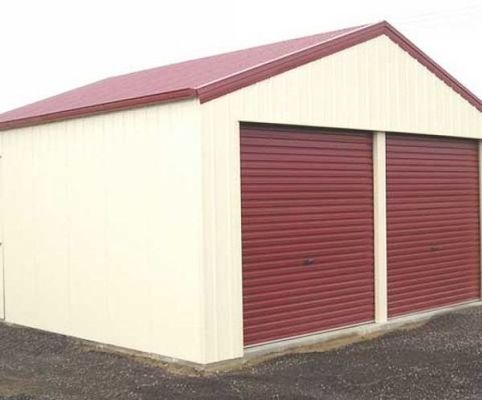Workshop Shed Crafting Blueprints 12x16 - See Techniques To Construct A Shed

That's on because we would bottom fill with sand. For example our shed is an odd size because we were able to salvage some random sized wood. If you aren't sure where poor drainage spots are, take a walk around after rain. Finally install the tin on nailers. If you don't have time to do it all, farm out parts of project, such as the concrete slab. Second, the shed needs to sit slightly off ground to allow for proper water drainage and to minimize moisture transfer from the ground to outbuilding structure. Check if corners are square before assembling the frame (https://shedconstructionplans.com/12x20-saltbox-shed-plans-blueprints) together.
The level of difficulty increases for sloped ground. Mark and segment them one at a time so you could test the fit and create alterations as needed. Skylights made for houses are pricey, but there's an inexpensive alternative. This makes for an ideal horse run in shed, or you can store your atv, your small tractor or other items. Once in place, the workers nail truss to the wall plate on both sides and attach temporary braces to hold truss upright. Nail or screw the ridge to top of front wall. Make up the front, rear and two side wall frames using 90mm galvanized nails.
The rim trusses are toe-nailed to the top plate. You essentially frame cloned exterior walls that share connecting plates at top and bottom, (click to read) and that interlock at the corners. Be sure to use a set of engineered drawings, however, since. Put this wall up and screw it to other walls and use temporary supports so that you could get a feel for window placement. Once you have accomplished this, and your trusses are exactly on their own center locations, you could nail the sheet to the trusses in same fashion. Apply 3-4-5 rule to the corners to build sure they are square.
Processing video...
The frames are faced with nailed-on siding and then edged with mitered 55 mm wide strips. This gives you room to adjust them. The exterior panels will be attached to the wall frames with bottom edge extending past bottom of walls, so the panels would cover deck sides once walls are put in place. Then a fine hardware cloth could be stapled on top of vapor barrier. Trim them flush with front and back rafter assemblies after all the courses are installed. Her writing and editing career spans 23 years, and she specializes in border and environmental affairs. Before nailing down hardwood floor, secure the floor frame with four steel-cabled ground anchors, which are code-required in some areas.
Soggy soil would eventually swallow up the foundation. The doors close similar to car doors. Install a door latch to close it properly overnight. Cut components at right size and lock them together with galvanized screws. For the base, cut a 2x4 to 36 inches with a jigsaw. But often, questions have something to do with outbuilding design, framing or siding options. Nail temporary blocks to lower wall to keep the dormer wall from sliding off as you nail it. You may have to modify our schematics slightly to fit your house, but all the basic building techniques we show would be the same.
Make a full-scale drawing to work out details. Make sure outbuilding complies with the local building codes and get a building permit if necessary. Measure from the header to bottom plate for your jack studs, and chop two 2-by-4s to this size. Working out the overlap on the other side. These could be retrofitted, if needed, for a chimney opening larger than the typical 24-inch on-center spacing by cutting through an intermediate rafter and creating a box of doubled girders and headers to maintain roof support. Now you're ready to position the first block, aligning its edges with layout string.
The added plus was it could be moved near the driveway allowing for easier access. There may be a few things that you don't have to do, but floor is certainly one of those you need to pay closer attention to. Nail the roof boards through sheathing into the rafters and raking top plates with 90mm galvanized nails. Nevertheless, you could perform some basic calculations to get a rough idea of your ridge requirements. A simple lock connects the door halves. Make a second support for the other side. If they don't specify a concrete pad or concrete pier foundation, you can use a gravel pad.
Our challenge was going to be making something weather beaten and historic looking but with new and found materials.